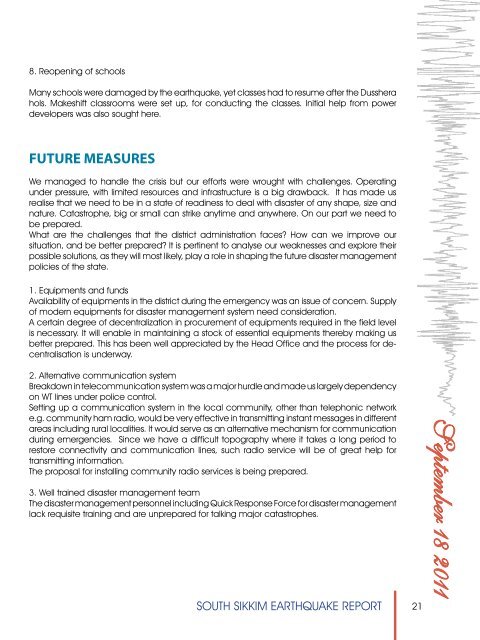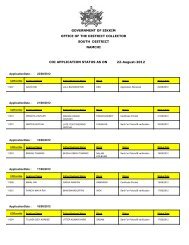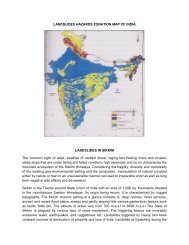South Sikkim Earthquake Report
South Sikkim Earthquake Report
South Sikkim Earthquake Report
- No tags were found...
Create successful ePaper yourself
Turn your PDF publications into a flip-book with our unique Google optimized e-Paper software.
8. Reopening of schools<br />
Many schools were damaged by the earthquake, yet classes had to resume after the Dusshera<br />
hols. Makeshift classrooms were set up, for conducting the classes. Initial help from power<br />
developers was also sought here.<br />
FUTURE MEASURES<br />
We managed to handle the crisis but our efforts were wrought with challenges. Operating<br />
under pressure, with limited resources and infrastructure is a big drawback. It has made us<br />
realise that we need to be in a state of readiness to deal with disaster of any shape, size and<br />
nature. Catastrophe, big or small can strike anytime and anywhere. On our part we need to<br />
be prepared.<br />
What are the challenges that the district administration faces How can we improve our<br />
situation, and be better prepared It is pertinent to analyse our weaknesses and explore their<br />
possible solutions, as they will most likely, play a role in shaping the future disaster management<br />
policies of the state.<br />
1. Equipments and funds<br />
Availability of equipments in the district during the emergency was an issue of concern. Supply<br />
of modern equipments for disaster management system need consideration.<br />
A certain degree of decentralization in procurement of equipments required in the field level<br />
is necessary. It will enable in maintaining a stock of essential equipments thereby making us<br />
better prepared. This has been well appreciated by the Head Office and the process for decentralisation<br />
is underway.<br />
2. Alternative communication system<br />
Breakdown in telecommunication system was a major hurdle and made us largely dependency<br />
on WT lines under police control.<br />
Setting up a communication system in the local community, other than telephonic network<br />
e.g. community ham radio, would be very effective in transmitting instant messages in different<br />
areas including rural localities. It would serve as an alternative mechanism for communication<br />
during emergencies. Since we have a difficult topography where it takes a long period to<br />
restore connectivity and communication lines, such radio service will be of great help for<br />
transmitting information.<br />
The proposal for installing community radio services is being prepared.<br />
3. Well trained disaster management team<br />
The disaster management personnel including Quick Response Force for disaster management<br />
lack requisite training and are unprepared for talking major catastrophes.<br />
SOUTH SIKKIM EARTHQUAKE REPORT<br />
21<br />
September 18 2011
















